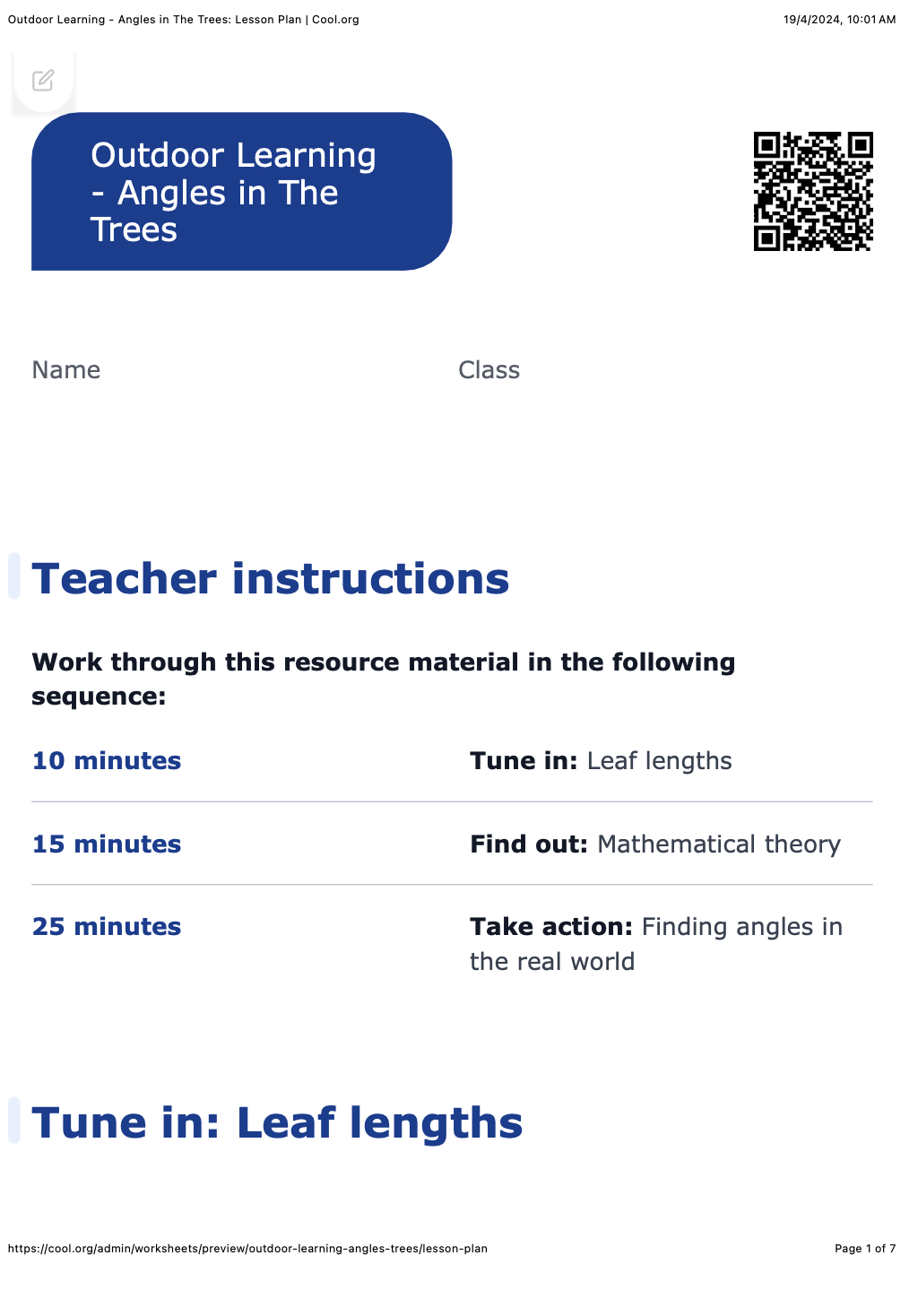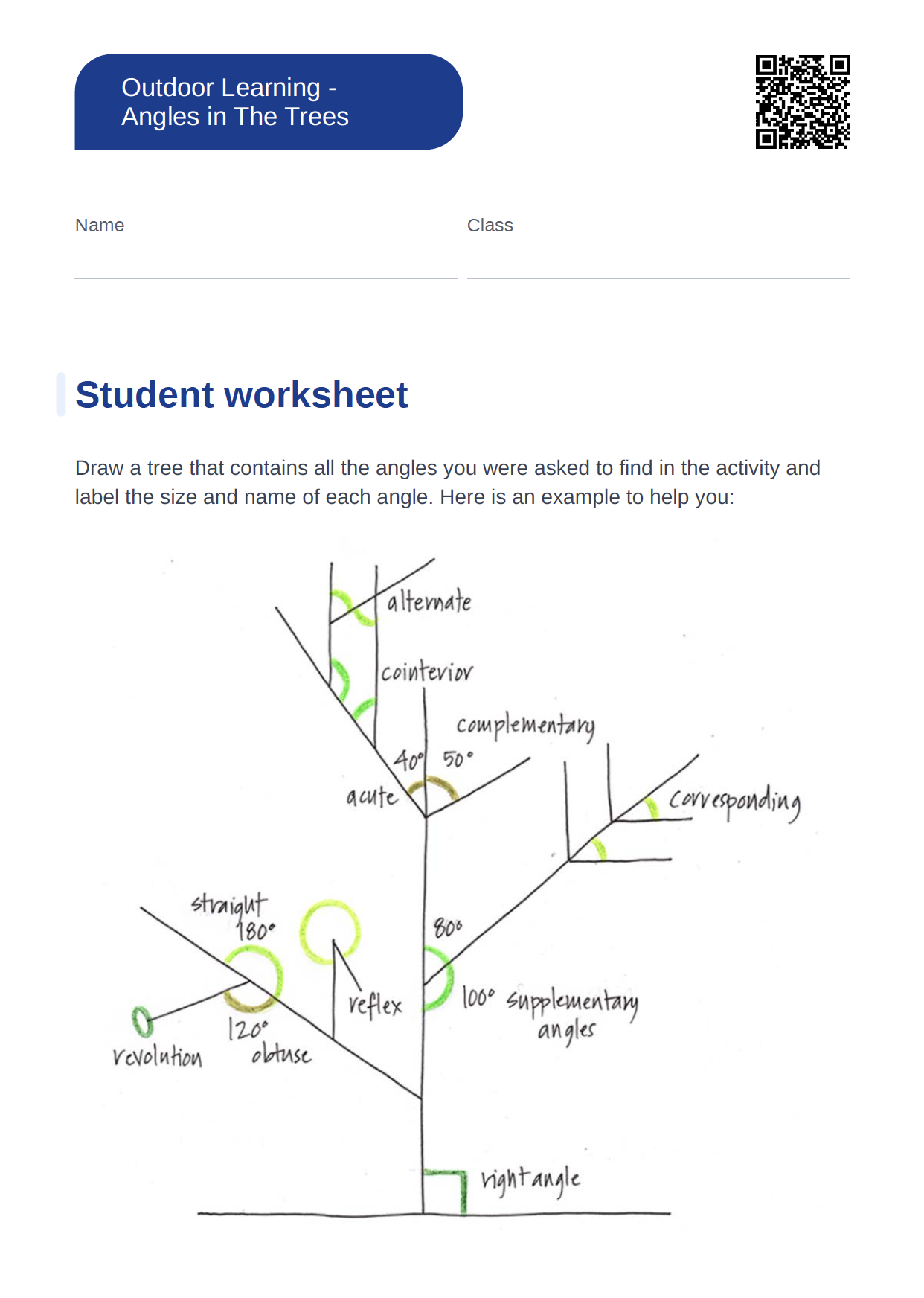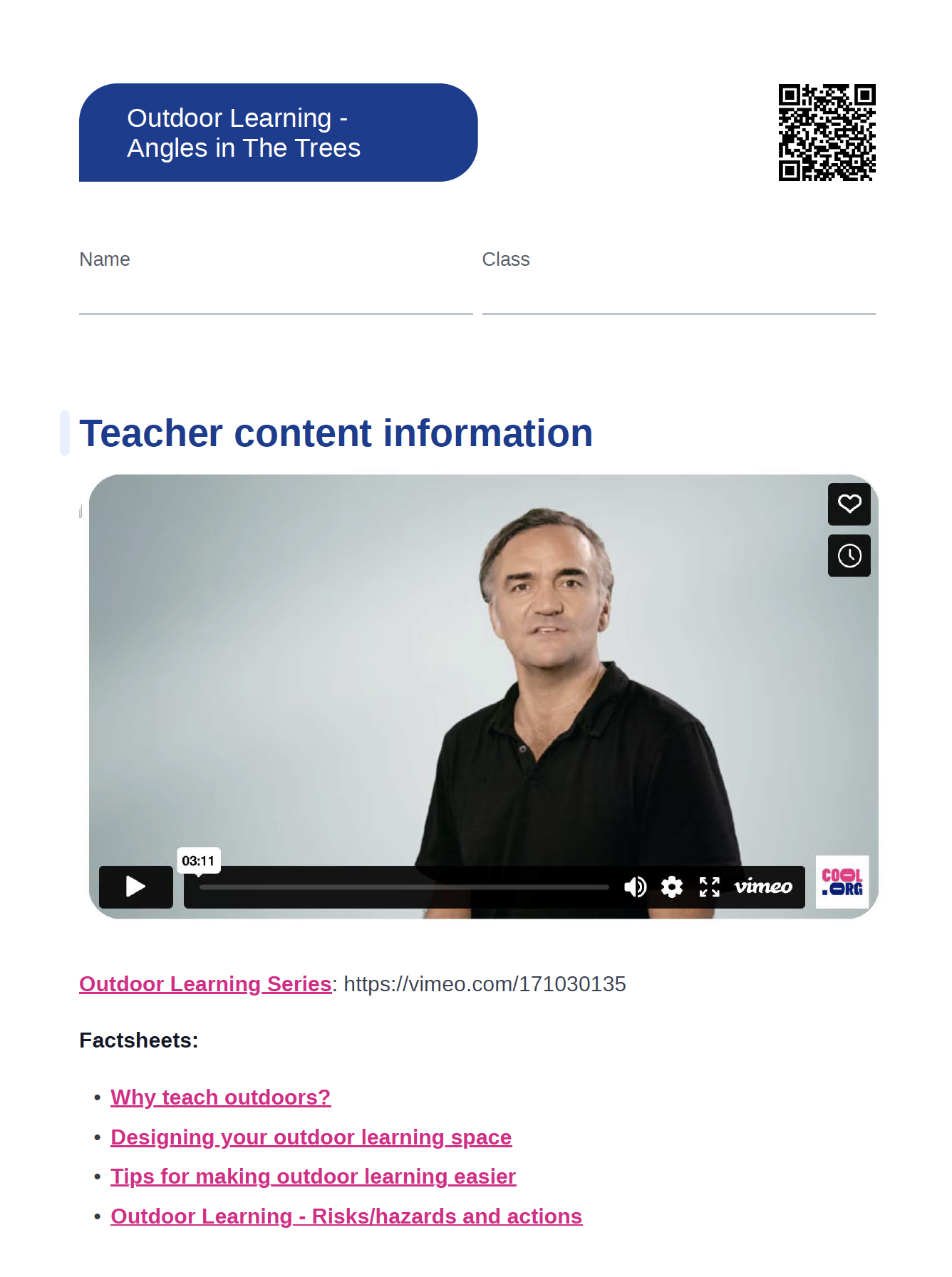Lesson summary
Students investigate, estimate, identify and classify angles in the outdoors in preparation for furthering their understanding of geometry. They apply their understanding of angles to the real world by identifying a range of angles in their local environment.
Learning intentions:
Students will...
- identify corresponding, alternate and co-interior relationships between angles formed when parallel lines are crossed by a transversal.
Success criteria:
Students can...
- find angles in nature.
Lesson guides and printables
Curriculum links
Select your curriculum from the options below.
Lesson details
Curriculum mapping
Australian Curriculum (v9.0) content descriptions:
Year 7 Mathematics:
Students learn to:
- identify corresponding, alternate and co-interior relationships between angles formed when parallel lines are crossed by a transversal; use them to solve problems and explain reasons (AC9M7M04)
General capabilities: Critical and Creative Thinking.
Cross-curriculum priority: Sustainability.
Relevant parts of Year 7 achievement standards:
By the end of Year 7, students apply knowledge of angle relationships and the sum of angles in a triangle to solve problems, giving reasons.
Resources required
- Finding Angles In Our School – Worksheet – one per student
- Types of Angles – Examples – one per teacher
- Types of Angles – Worksheet – one per student
- Student Worksheet – one per student.
Skills
This lesson is designed to build students’ competencies in the following skills:
- problem-solving
- critical thinking
Additional info
Level of teacher scaffolding: Medium - oversee activity and facilitate discussion.
This lesson is designed to be taught outside. It contains all the tools required for students to reap the benefits of being outdoors while learning the outcomes of the Australian Curriculum. By spending time outdoors and connecting to nature, students are more likely to care for and conserve nature as adults.
This is an original Cool+ lesson.
Related professional learning
Introduction to Secondary STEM
Quick summary: This course will help you understand the essential foundations of STEM teaching and learning and provide opportunities to help build knowledge, skills and confidence to take on STEM in your classroom.




Welcome back!
Don't have an account yet?
Log in with:
Create your free Cool.org account.
Many of our resources are free, with an option to upgrade to Cool+ for premium content.
Already have an account?
Sign up with:
By signing up you accept Cool.org's Terms and Conditions(Opens in new tab) and Privacy Policy(Opens in new tab).